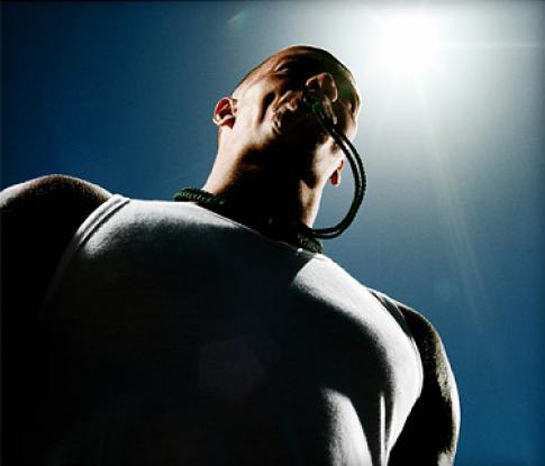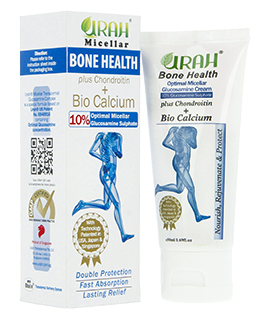
You've decided it's time to start exercising. Congratulations! You've taken the first step on your way to a new and improved body and mind
"Exercise is the magic pill," says Michael R. Bracko, EdD, FACSM, chairman of the American College of Sports Medicine's Consumer Information Committee. "Exercise can literally cure diseases like some forms of heart disease. Exercise has been implicated in helping people prevent or recover from some forms of cancer. Exercise helps people with arthritis. Exercise helps people prevent and reverse depression."
And there's no arguing that exercise can help most people lose weight, as well as look more toned and trim.
Of course, there's a catch. You need to get -- and keep -- moving if you want to cash in on the benefits. This doesn't necessarily mean following a strict, time-consuming regimen at the gym -- although that can certainly reap benefits. The truth is you can get rewards from many different types and levels of exercise.
"Any little increment of physical activity is going to be a great boost to weight loss and feeling better," says Rita Redberg, MSc, chairwoman of the American Heart Association's Scientific Advisory Board for the Choose to Move program.
Your exercise options are numerous, including walking, dancing, gardening, biking -- even doing household chores, says Redberg. The important thing is to choose activities you enjoy, she says. That will increase your chances of making it a habit.
And how much exercise should you do? For heart health, the AHA recommends at least 30 minutes of moderate-intensity physical activity, such as walking, on most days of the week.
Yet "if you're getting less than that, you're still going to see benefits," says Redberg. "It's not like if you can't do 30 minutes, you shouldn't do anything, because you're definitely going to see benefits even at 5 or 10 minutes of moving around."
Ready to get started? Health and fitness experts helped WebMD compile this beginner's guide to exercise, including definitions of some common exercise terms, sample workouts, and recommendations on home exercise equipment.
A way to measure the intensity of your exercise is to check you heart rate or pulse during physical activity. These should be within a target range during different levels of intensity.
For example, according to the CDC, for moderate-intensity physical activity, a person's target heart rate should be 50% to 70% of his or her maximum heart rate.
The first step to any workout routine is to evaluate how fit you are for your chosen physical activity. Whenever you begin an exercise program, it's wise to consult a doctor. Anyone with major health risks, males aged 45 and older, and women aged 55 and older should get medical clearance, says Cedric Bryant, PhD, chief exercise physiologist for the American Council on Exercise.
But no matter what your medical condition, you can usually work out in some way.
"I can't think of any medical issue that would get worse from the right kind of exercise," says Stephanie Siegrist, MD, an orthopedic surgeon in private practice in Rochester, N.Y.
After assessing your fitness, it helps to set workout goals. For example, do you want to prepare to run a 5K? Hit the gym five times a week? Or just walk around the block without getting winded?
"Make sure the goals are clear, realistic, and concise," says Sal Fichera, an exercise physiologist and owner of New York-based Forza Fitness.
Whatever your goals and medical condition, approach any new exercise regimen with caution.
"Start low and go slow," advises Bryant. Many beginners make the mistake of starting out too aggressively, only to give up when they end up tired, sore, or injured, he says. Some get discouraged because they think an aggressive workout will produce instant results.
"Generally speaking, when people go about it too aggressively early in the program, they tend not to stick with it over the long haul," says Bryant. "What you really want to do is to develop some new habits that you can stick with for a lifetime."
Even long-term exercisers may have misconceptions about exactly what some fitness terms mean. Here are some definition of words and phrases you're likely to encounter:
Before beginning any fitness routine, it's important to warm up, then do some light stretching. Save the bulk of the stretching for after the workout.
Once you're warmed up, experts recommend three different types of exercise for overall physical fitness: cardiovascular activity, strength conditioning, and flexibility training. These don't all have to be done at once, but doing each on a regular basis will result in balanced fitness.
To learn how to perform certain exercises, consider hiring a personal trainer for a session or two, or take advantage of free sessions offered when you join a gym.
Exercise doesn't have to be done at the gym. You can work out in the comfort of your own home. And with calesthenic-type exercises such as squats, lunges, pushups, and sit-ups, you can use the resistance of your own weight to condition your body. To boost your strength and aerobic capacity, you may also want to invest in some home exercise equipment.
Experts offer their thoughts on some popular home exercise items:
Source: http://www.webmd.com/fitness-exercise/guide/fitness-beginners-guide
Click here to Check How to Use Urah Products
Click here to Check the Quality of your Glucosamine Product before use

2025 © URAH Transdermal Pte Ltd. ALL Rights Reserved. Urah Privacy Policy | Terms of Service | Return Policy
Disclaimer: All contents on this website are provided for general information only, and should not be treated as a substitute for the medical advice of your Physician or any other health care professional. Urah is not responsible or liable for any diagnosis made by any user based on the content of this website. Always consult your own Physician if you're in any way concerned about your health. Urah Micellar Transdermal Cream formulae are not patented or under any patent rights.
No comment yet